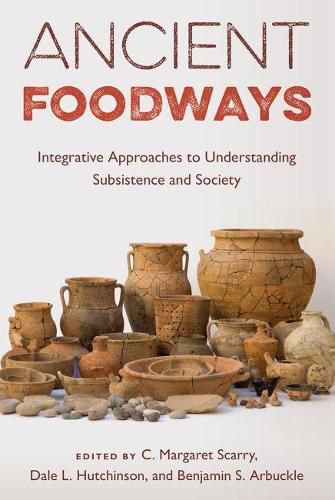Readings Newsletter
Become a Readings Member to make your shopping experience even easier.
Sign in or sign up for free!
You’re not far away from qualifying for FREE standard shipping within Australia
You’ve qualified for FREE standard shipping within Australia
The cart is loading…






This title is printed to order. This book may have been self-published. If so, we cannot guarantee the quality of the content. In the main most books will have gone through the editing process however some may not. We therefore suggest that you be aware of this before ordering this book. If in doubt check either the author or publisher’s details as we are unable to accept any returns unless they are faulty. Please contact us if you have any questions.
How archaeology can shed light on past foodways and social worlds
Through various case studies, Ancient Foodways illustrates how archaeologists can use bioarchaeology, zooarchaeology, archaeobotany, architecture, and other evidence to understand how food acquisition, preparation, and consumption intersect with economics, politics, and ritual. Spanning four continents and several millennia of human history, this volume is a comprehensive and contemporary survey of how archaeological data can be used to interpret past foodways and reconstruct past social worlds.
This volume is organized around four major themes: feasting and politics; sacrifice, ritual, and ancestors; diet, landscape, and health; and integrative methods. Contributors weave together multiple threads of evidence relating to plants, animals, craft production, and human health and reconnect the material remnants with behaviors, practices, and meanings. The case studies show the varied and creative ways that multiple sources of evidence can be used to shed light on past foodways.
Ancient Foodways demonstrates how environmental and cultural factors shaped past subsistence strategies and cooking practices and the role food played in shaping cultural identity and exchange networks, while also examining how food production methods can lead to environmental destruction and the detrimental role of dietary constraints on human health.
$9.00 standard shipping within Australia
FREE standard shipping within Australia for orders over $100.00
Express & International shipping calculated at checkout
This title is printed to order. This book may have been self-published. If so, we cannot guarantee the quality of the content. In the main most books will have gone through the editing process however some may not. We therefore suggest that you be aware of this before ordering this book. If in doubt check either the author or publisher’s details as we are unable to accept any returns unless they are faulty. Please contact us if you have any questions.
How archaeology can shed light on past foodways and social worlds
Through various case studies, Ancient Foodways illustrates how archaeologists can use bioarchaeology, zooarchaeology, archaeobotany, architecture, and other evidence to understand how food acquisition, preparation, and consumption intersect with economics, politics, and ritual. Spanning four continents and several millennia of human history, this volume is a comprehensive and contemporary survey of how archaeological data can be used to interpret past foodways and reconstruct past social worlds.
This volume is organized around four major themes: feasting and politics; sacrifice, ritual, and ancestors; diet, landscape, and health; and integrative methods. Contributors weave together multiple threads of evidence relating to plants, animals, craft production, and human health and reconnect the material remnants with behaviors, practices, and meanings. The case studies show the varied and creative ways that multiple sources of evidence can be used to shed light on past foodways.
Ancient Foodways demonstrates how environmental and cultural factors shaped past subsistence strategies and cooking practices and the role food played in shaping cultural identity and exchange networks, while also examining how food production methods can lead to environmental destruction and the detrimental role of dietary constraints on human health.